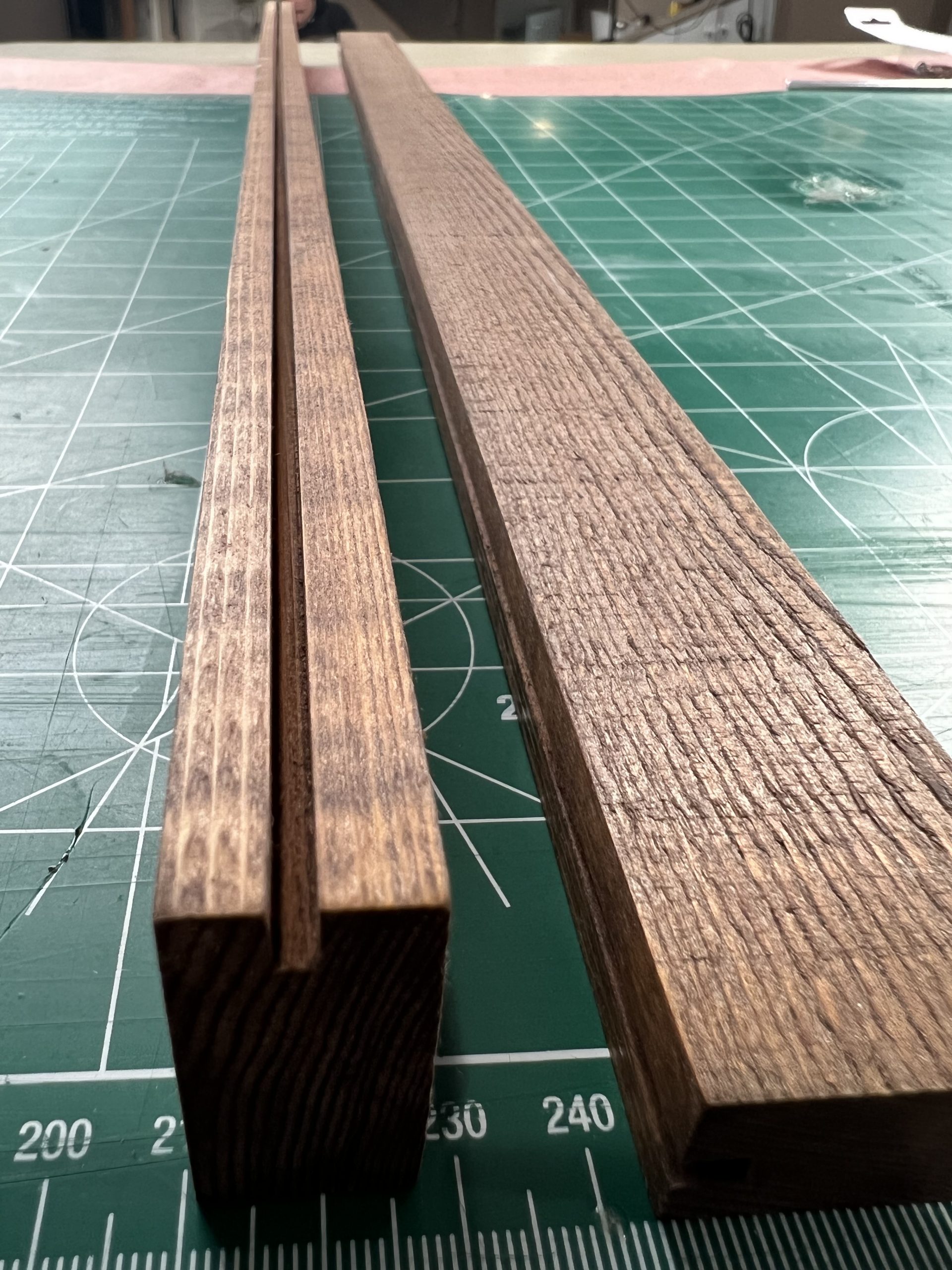Making A Two Piece Poster Hanger
My step daughter wanted to hang this map that she purchased but didn’t want the standard poster frame with plexiglass. She wanted something a little more rustic that would add character. We decided on this two piece wood hanger which sort of resembles a vertical scroll which we thought went really well with this vintage map (possibly like a treasure map). The video below documents the steps taken to build the frame. Below the video I’ve added pictures as well as a detailed post on the process. This is a fairly simple project that doesn’t require a ton of tools or materials and add a nice conversation piece to any space.
Step 1: Measure > Mark > Cut
First step is decide what kind of look are you going for which will then determine what wood you’ll be using. If you’re wanting a more elegant and finished look you may choose to use Oak or Walnut. If you’re going for a more rustic or reclaimed wood consider rough sawn cedar or real reclaimed barn wood. A painted frame would look best with a wood that has smoother grain such as Pine or Poplar.
Since we wanted the rustic look, we chose a rough sawn cedar where you can see in the picture that one side of the board has not been sanded down and has a lot of depth between the grain. I purchased one 1″ by 3″ by 8ft cedar board from my local big box store which cost about $8.
Determining the length of the wood pieces is as easy as placing the wood on top of the poster and making sure it is flush with one end of the board, make a mark on the wood on the other end of the poster. Cut two pieces the same length.
Step 2: Cut the groove for the poster and spline
The poster is held in the frame by placing the poster and a piece of window/door screen spline in this groove. The depth of the groove really depends on preference and also how much of a margin is available on the poster.
and also how much of a margin is available on the poster.
This map only had about 1/4″ top and bottom margin before the decorative border began. Using my table saw, I set the depth using my Woodpecker Tools guide blocks, and adjusted the fence so the blade was directly centered on the board. The width of the cut was just the width of my blade, which is slightly less than 1/8″. Run both pieces through the saw.
Step 3: How are you going to hang it?
In the video you’ll notice that this is the point which I stained the wood but then I went back and recessed my d-ring hangers into the back of the top board. Ideally, I would do all of my cutting prior to staining so I don’t have to go back and touch-up the wood with stain, but I think I got a little excited and moved onto staining prematurely. There are two options of hangers that can be used, steel eye screws or D-Ring Hangers.

If you use d-ring hangers like I did, you don’t have to recess the hangers because if you don’t, the top board won’t sit flush against the wall because the hangers will be hitting the wall. Once I decided on the general location of the hanger I used my Clear Style Pocket Squares (linked below) to lock in the location of both the length in from the end of the board and the depth from the edge ensuring both hangers exactly in the same place on each side. I grab for these pocket rules on every project and are the most affordable option for a precision measurement tool. I then used a router with a 1/8th” straight router bit which leaves the bottom of the cut perfectly flat and cleaned up the sides with a chisel. Overkill…YES! Required…NO!
Using steel eye screws is an easier approach as you don’t have to do any cutting to recess the hangers. These you will screw directly on the top of the top board after you stain the wood.
I think it’s just a personal preference which you use but if I made these again I would keep it simple and screw in the eye hooks.
Step 4: Stain and Assemble
We used a Minwax stain in “Special Walnut” color for a warmer dark but not Java dark look. I only applied one coat and did not put a top coat on as we didn’t want a sheen.
Now it’s time to fasten the poster to the frame using screen spline. Depending on the thickness of your saw blade which made the groove along your frame, the size of screen spline may differ. I took a small piece of wood with a groove cut to the hardware store and test fit the different sizes of spline to see which would fit. If the spline is too loose, the poster will fall out of the frame. If too tight, you’re going to really struggle trying to get the spline in the groove. I found spline in .140 inch size was the best fit for my application.
This doesn’t mean the spline went into the groove easy, because it didn’t. After having a difficult time I ended up easing the back edge of the groove with a chisel allowing the spline to roll into the groove as a starting point. I then worked my way along the board inch by inch using a flat head screwdriver to push the spline tightly into the groove with the poster. This process took me maybe 15 minutes total and the poster will definitely not be falling out of the frame because it was a pretty tight fit.
Finally, the last step is to use some kind of twine, string, rope, etc to hang the frame. I used garden twine, like what you would use to tie up branches to put on the curb for pickup.
And that’s it! All in all, not including time for the stain to dry, I think this project took me about 2 hours to complete. If I didn’t route out the space for the hangers I would have saved about 45 minutes.
If you decide to make this project I would love to see your finished project by tagging me on Instagram @dellsdiy. Happy Building!
Tools and Products Used In This Project
The below links are Amazon affiliate links. As an Amazon affiliate I earn small commissions from qualifying purchases at no additional cost to you.
Other Products I Support and Am Affiliated With
The best and most comfortable work boots I’ve ever worn (Use discount code DELLSDIY for 12% of your entire order)
Fusion 360 3D Modeling Software (20% discount by using link, no discount code required)







